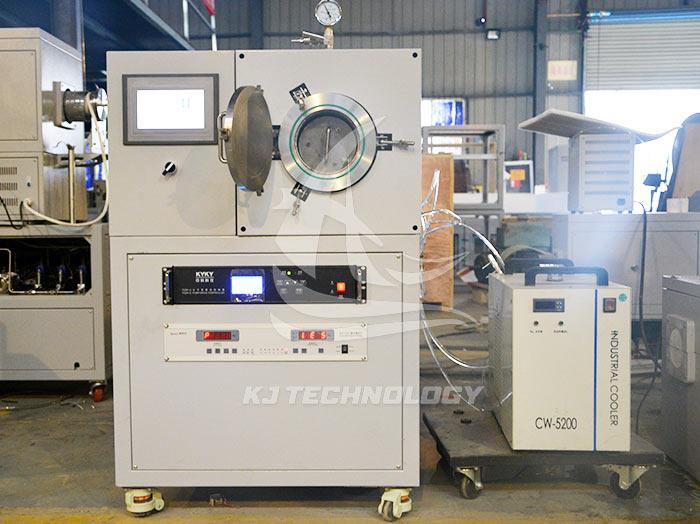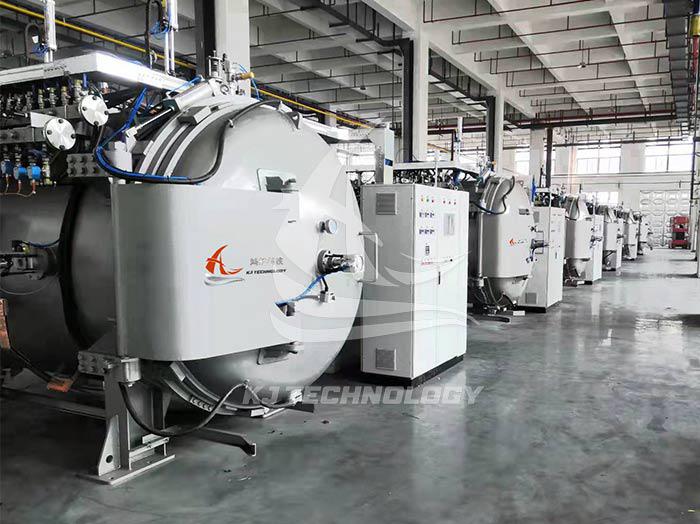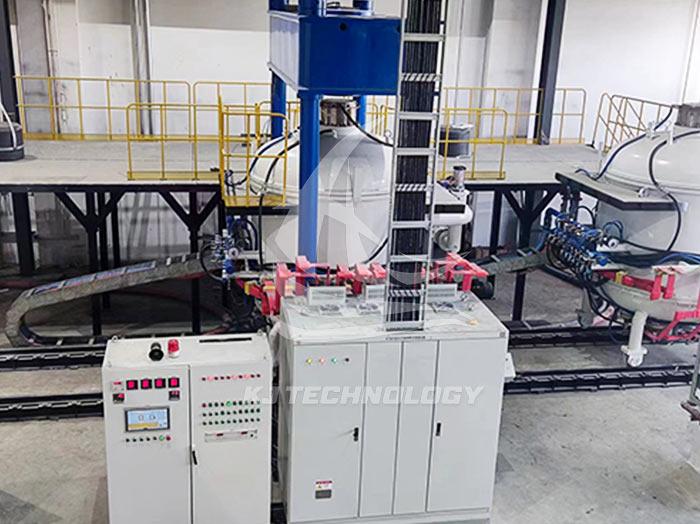Working principle of customized vacuum furnace for ceramic sintering
 08-28-2025 Author: KJ technology
08-28-2025 Author: KJ technology
The working principle of customized ceramic sintering vacuum furnace is as follows:
Loading: Place the ceramic material to be sintered into the furnace chamber of the vacuum furnace.
Vacuum pumping: The air inside the furnace is pumped out through a vacuum pump system to create a vacuum environment. This helps to eliminate volatile gases such as water vapor, hydrogen, and oxygen in ceramic materials, as well as reduce the residual insoluble gases such as carbon monoxide, carbon dioxide, and nitrogen, thereby reducing the formation of pores during sintering and improving the density of ceramics.
Heating: Using heating elements (such as resistance heaters, induction heaters, or graphite heaters) to heat the furnace and bring the ceramic material to the desired high temperature. In a vacuum environment, the surface energy of ceramic particles decreases, promoting material migration between particles and grain boundary movement.
Insulation: Maintain a set sintering temperature for a period of time to allow the ceramic material to undergo sufficient chemical reactions and crystallization. This stage is the key process of ceramic densification, where the contact area between particles increases, pores gradually decrease, material volume shrinks, and strength increases.
Cooling: After sintering is completed, the furnace is cooled through a cooling system. The cooling method can be natural cooling or forced cooling (such as accelerated cooling with protective gas), gradually cooling the ceramic material to room temperature.
The role of vacuum environment in ceramic sintering:
Preventing oxidation and pollution: The vacuum environment avoids the influence of oxygen and moisture in the air on ceramic materials, preventing oxidation reactions, reducing impurity pollution, and improving the purity and performance of ceramics.
Promoting gas exhaust: Under vacuum conditions, gases inside ceramic materials are more likely to escape, reducing the generation of pores and defects and increasing the density of the material.
Reduce sintering temperature: Vacuum environment has the effect of activating sintering, which can lower the sintering temperature of ceramic materials, shorten sintering time, and save energy.
Improving material properties: By precisely controlling parameters such as vacuum degree, temperature, and insulation time, the microstructure of ceramics can be optimized, such as grain size, pore distribution, and grain boundary characteristics, thereby improving the mechanical strength, hardness, wear resistance, and corrosion resistance of materials.
Customized design considerations:
Furnace size and shape: Customize suitable furnace size and heating area based on the size and shape of ceramic products to ensure temperature uniformity.
Heating method and power: Based on the characteristics of ceramic materials and sintering process requirements, choose the appropriate heating method (such as resistance heating, induction heating, or graphite heating) and heating power to meet high temperature requirements.
Vacuum system configuration: Select the appropriate combination of vacuum pumps (such as mechanical pump+diffusion pump or molecular pump) according to the requirements of sintering process for vacuum degree, to achieve the required ultimate vacuum degree.
Temperature control system: using high-precision temperature sensors and controllers, combined with power regulation of heating elements, to achieve precise control and uniform distribution of temperature inside the furnace.
Cooling system design: Design appropriate cooling methods based on the cooling requirements after sintering, such as natural cooling, air cooling, or gas cooling, to ensure safe cooling of ceramic materials.
Safety protection measures: Equipped with safety devices such as over temperature protection, water cut-off protection, and leakage protection to ensure the stability of equipment operation and the safety of operators.








